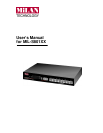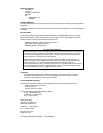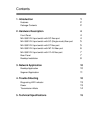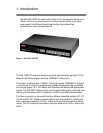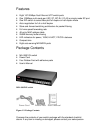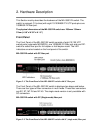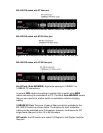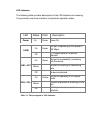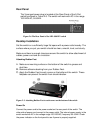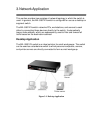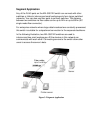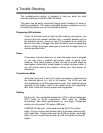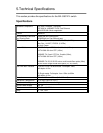
4.Trouble Shooting
This troubleshooting section is intended to help you solve the most
common problems on the MIL-S801XX switch.
The switch can be easily monitored through panel indicators to assist in
identifying problems. This section describes common problems you may
encounter and where you can find possible solutions.
Diagnosing LED Indicator
If the Link indicator does not light up after making a connection, you
should check the network interface (e.g., a network adapter card on
the attached device), device to see if it is powered on or defective.
Be sure the cable is plugged into both the switch and corresponding
device. Verified the proper cable type is used and its length does not
exceed specified limits.
Power
If the power indicator does turn on when the power cord is plugged
in, you may have a problem with power outlet, or power cord.
However, if the switch powers off after running for a while check for
loose power connections, power losses or surges at power outlet. If
you still cannot resolve the problem, contact your local dealer for
assistance.
Transmission Mode
Verify that each port is set to the same transmission mode used by
the attached device (i.e., half or full duplex). The RJ-45 port use
auto-negotiation to set the transmission mode. If the attached device
operates at half duplex, which is the default when auto-negotiation
fails, then it does not have to support auto-negotiation.
Cabling
RJ-45 ports: Use unshielded twisted-pair (UTP) or shield twisted-pair
(STP) cable for RJ-45 connections: 100O cable for 10Mbps
connections. See cable specifications on next page. Twisted-pair
cabling can not exceed 100 meters (328 feet).
100BASE-FX fiber port: multi-mode must be 62.5/125 um fiber
cable. You can connect two devices over a 2-kilometer distance with
multi-mode fiber. Single-mode must use 9/125 um single- mode fiber
cable. You can connect two devices up to 60- kilometers running full
duplex.



